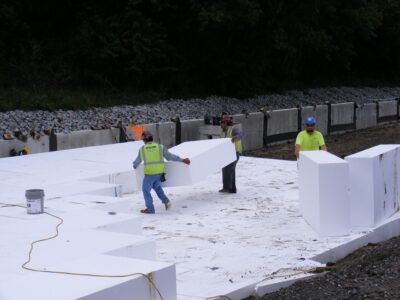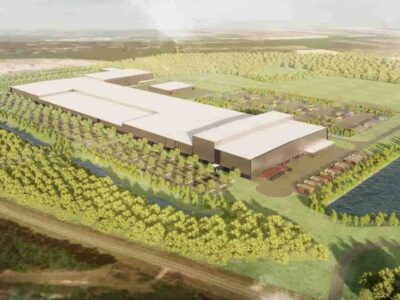Several new technologies have the power to revolutionize our lives while also providing the foundation for a transformative future. In my recent conversations with leaders from Carbon Direct, Soilworks, and Checkerspot, they all shared their innovations which could be the next big thing. These conversations provide hope that we are on the precipice of a massive economic and technological opportunity through the rise of decarbonization – a new priority that will reshape our impact on the planet by eliminating GHG emissions.
The American spirit of innovation is one of our greatest assets as we adapt and work to counteract changing climate. This includes simple solutions like information systems to record complex data that can help reduce city upkeep costs, boost business productivity and increase the average citizen’s quality of life. A recent episode of American Innovators taught me that we are making serious progress in more fully utilizing these systems through the rise of smart cities. In fact, some of America’s most creative thinkers are working to transform Charlotte into the premier smart city, in which materials are not wasted and technology positively transforms the lives of its inhabitants.
The term “smart city” may sound like marketing, but beneath it is technology and innovation that has the power and potential to provide a better cleaner future for our communities. These municipalities – where the public and private sectors collaborate in an effort to harness the power of information technologies – are collecting data that helps to improve efficiency over a variety of industries across their respective communities. Charlotte is one of the first cities to embrace this concept and has already realized financial benefits. The city deployed shadow meters in their skyscrapers, which has given buildings across the city the information necessary to lower their energy usage by almost 20% over five years. This has translated into $26 million in savings, and it has cut carbon emissions by 300,000 tons. Here, technology is aligning cost optimization and sustainability, both of which are creating a city that is better to live and work in.
Beyond managing energy, Charlotte’s smart city developers are taking on another efficiency opportunity: bending the linear economy into something more … circular. Our legacy linear economies have built a system that extracts resources from the ground, uses them for a period, and then disposes of them. That explains the nearly 150 million tons of this waste deposited in landfills per year in the United States. Once there, this trash contributes to the degeneration of the environment; plastics alone create $13 billion in pollution costs. Transitioning to a circular economy – where goods are made, used, recycled, or upcycled into new goods – eliminates the need for landfills by investing in the reuse of items at the end of their life cycle. This boosts the entire recycling industry and offers an estimated $4.5 trillion impact on the economy through job creation and cost reduction. The city of Charlotte has been empowering innovators who seek to make the circular economy a reality and even designed the “North End Smart District” to act as a hub of innovation for this space.
For a successful circular economy, consumers must adopt many of the connected recycling innovations, practices, and technologies. Convincing the market to embrace change can be difficult. Many people have a natural inclination to remain in their comfort zone and will not want to support a new innovation until they are certain of its benefits. Additionally, converting away from long-established practices has an associated cost on the consumer, which can challenge the adoption of new practices. Luckily, those of us entrepreneurs that are focused on making the world a better place have an advantage: the human desire to improve the future for future generations. We want to impact others and the planet positively and will be motivated to incorporate these products into our lives if the cost of adoption is low and the path to switching is easy.
Here are my reflections on the cost-cutting and energy-optimizing strategies seen in Charlotte’s foremost circular economy innovators:
Clear Consumer Directives Maximize A Product’s Impact: For mass adoption, a product or service should make the largest impact, and its intended uses should be clear. The team behind Envision Charlotte’s Innovation Lab recognizes this set of connected ideas and is working to facilitate the increased acceptance of their sustainable product: recycling systems. On a local level, recycling directives are confusing. Different municipalities have different capabilities. People regularly try to recycle the incorrect materials and or get overwhelmed, avoiding the practice entirely. 25% of all recycled materials are contaminated, which magnifies the negative effects of our global waste surplus. Fixing this requires individual households to commit to meticulously sorting waste materials to prevent contamination, and the smallest mistake could still contaminate the load.
The Executive Director of Envision, Amy Aussieker, explained, “We can really make a bigger difference [on the path to systematic adoption by] giving individuals something they actually tangibly can do.” Simple actions and instructions might include better recycling directives that are standardized across the nation in order to minimize any confusion, which would boost recycling’s effectiveness. Envision’s Innovation Barn contributes to the idea by experimenting with new ways to recycle materials, such as crushing glass in order to make an analog to concrete. These efforts expand our recycling capabilities while helping municipalities make better decisions when deciding which materials to recycle.
Save Time And Effort For The Consumer: Another way to ease the cost of adoption is to lower the amount of effort that customers have to expend when using the product. Composting might be part of the solution. A recent EPA report estimated that American food waste released 170 million metric tons of carbon dioxide equivalent into our atmosphere. This does not include the number of methane emissions from all the organics that decompose in landfills, which is around 25% of their capacity. The creators of Crown Town Compost are making the consumer experience as simple and affordable as possible by gathering food waste directly from customers’ houses and treating it at their facility. Crown Town would manage the composting process before creating fertilizer with leftover materials. Their business model removed all of the difficulty from composting and is popular among consumers.
Reducing Costs Is The Fastest Route To The Consumer’s Heart: One of the easiest ways to sell a service or product is to demonstrate that it saves the customer money. Carolina Urban Lumber’s founder, Damon Barron, modeled his business on this concept. He realized that the average tree service company would have to spend $100,000 a year to discard their excess lumber in “stump dumps,” specialized landfills that hold unused timber. So, he set up a business that would save these companies money by collecting their extra wood, which circumvents the landfill-associated costs. Carolina Urban Lumber would then convert these items into firewood or even furniture and sell them locally. Once tree service firms realized that they could save money, they were willing to work with Damon, and the lumber industry was a step closer to the mass adoption of recycling. Damon’s firm has prevented 7.8 million pounds of wood from rotting in stump dumps while creating a profitable cost-saving business.
Produce Locally For Greater Resiliency And To Reduce Risk: According to the Office of the US Trade Representative, America is the world’s largest goods importer with a total value of $2.5 trillion. Imports have historically been a benefit to consumers. However, as we saw with the pandemic, the import/export market’s global supply chain network is subject to disruption. Supply chain issues can slow delivery and inflate the prices of products. And more complex supply chains perpetuate negative climate impacts due to travel – much of which is powered by fossil fuels. The supply chain constitutes the largest portion of the average business’ carbon emissions. Companies can mitigate some risks by manufacturing more domestically – reducing the distance between goods and their markets. Sustainable innovators like Carolina Urban Lumber have adopted this practice and are enjoying its benefits. The firm’s furniture assembly facility is within 10 miles of the very forests that provide the prerequisite timber and other input materials. This negates the need for a Transatlantic voyage to European manufacturing hubs and a journey of up 25,000 miles.
Check out the episode of the Consensus in Conversation podcast featuring Damon Barron of Carolina Urban Lumber.





